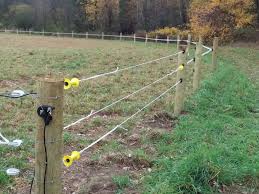Grazing is a method of animal husbandry where domestic livestock are allowed to move around and consume vegetation. There are two main grazing systems. These are rotational systems and Continuous grazing systems.
Rotational Grazing
This refers to the practice of allowing livestock to feed on part of a pasture for a period of time to a certain level before they are moved to the next level. The sequence is organized in an orderly way such that by the time the animals are returned to the place they first started, the pasture will have properly regenerated.
Advantages
- Making maximum use of the pasture by the livestock.
- It reduces the build-up of pests and diseases.
- Distribution of animal waste evenly in all paddocks.
- Excess pasture can be harvested for conservation.
- Giving pasture area time to regenerate before it is grazed on again.
Which Methods are used to facilitate Rotational Grazing?
- Paddocking- This is a fenced part of a pasture in which animals are allowed to graze. Therefore paddocking means grazing livestock in one paddock for a short period of time before moving to another. Sizes of paddocks depend on the amount of pasture. Each paddock should have a watering point. Despite that paddocking is very expensive it should also be noted that it saves herding labor.
- Strip Grazing- This is done by allowing livestock to graze on certain portions of pasture at a given time before moving them to the next. Mainly it’s done on very high-quality pastures since it involves the use of an electric fence to enclose animals in a given stripe of pasture. Temporary fences can also be used instead of electric fences to enhance strip grazing.
- Tethering- This is whereby you tie an animal to a post with a rope so as to feed within the restricted area.

Continuous Grazing (Herding)
A type of grazing where pasture is not allowed any resting period. Most of cases there are no fences around the pastures. Therefore, the animals loiter all over the area on daily basis. It is common in semi-arid areas and mostly used by nomadic pastoralists.
Zero Grazing (Stall feeding)
It is the practice of rearing animals in a permanent feeding enclosure system. Animal feed Is cut and taken to the animals in the stalls. Clean water together with mineral licks are also provided to the animal
Advantages
- Requires little land.
- Also, allow a higher stocking rate.
- It is easy to control diseases and parasites.
- Animals produce high yields due to less wastage of energy.
- Quick accumulation of manure.
- Animals make use of feeds without waste.
- The best private primary schools in Nyeri county.
- Best Public High Schools in Kiambu County.
- A list of special secondary schools, and contacts.
- List of Best private secondary schools in Nairobi County.
- Bay head elementary school history, enrolment, programs offered.
- List of best private primary schools in Kirinyaga County.
- Public Universities in Kenya